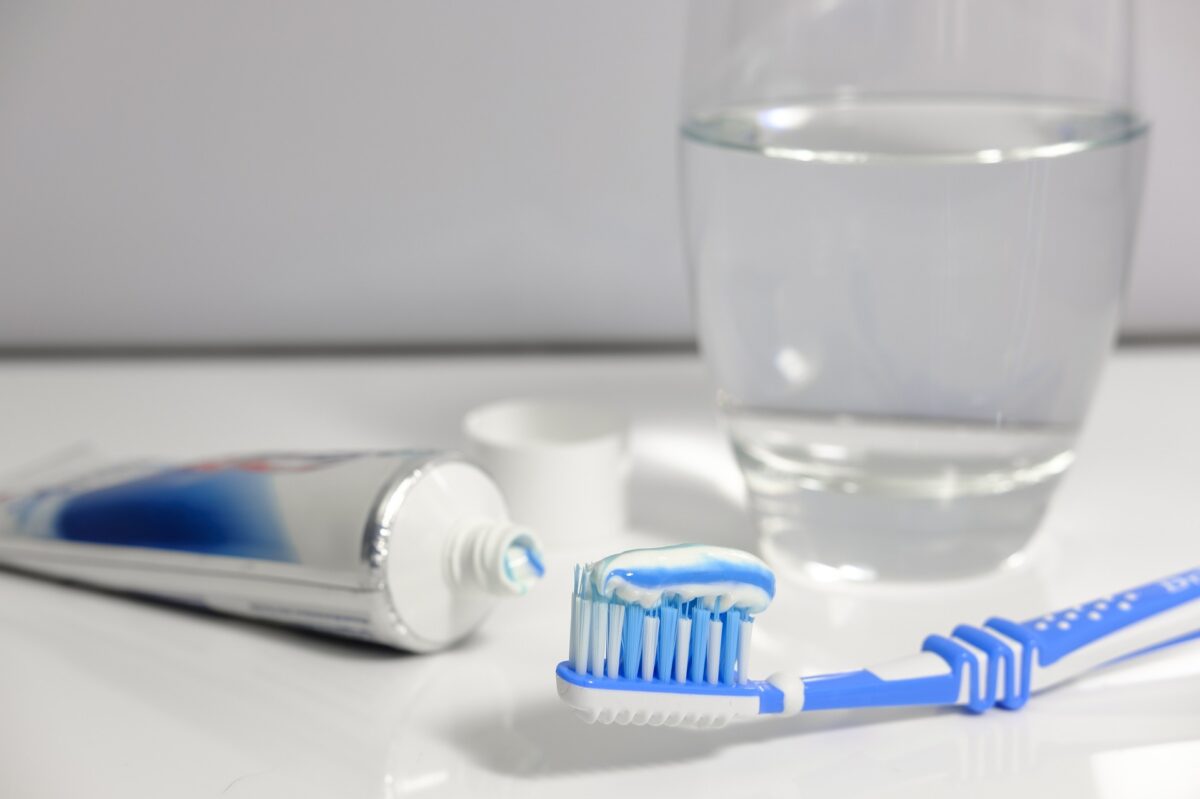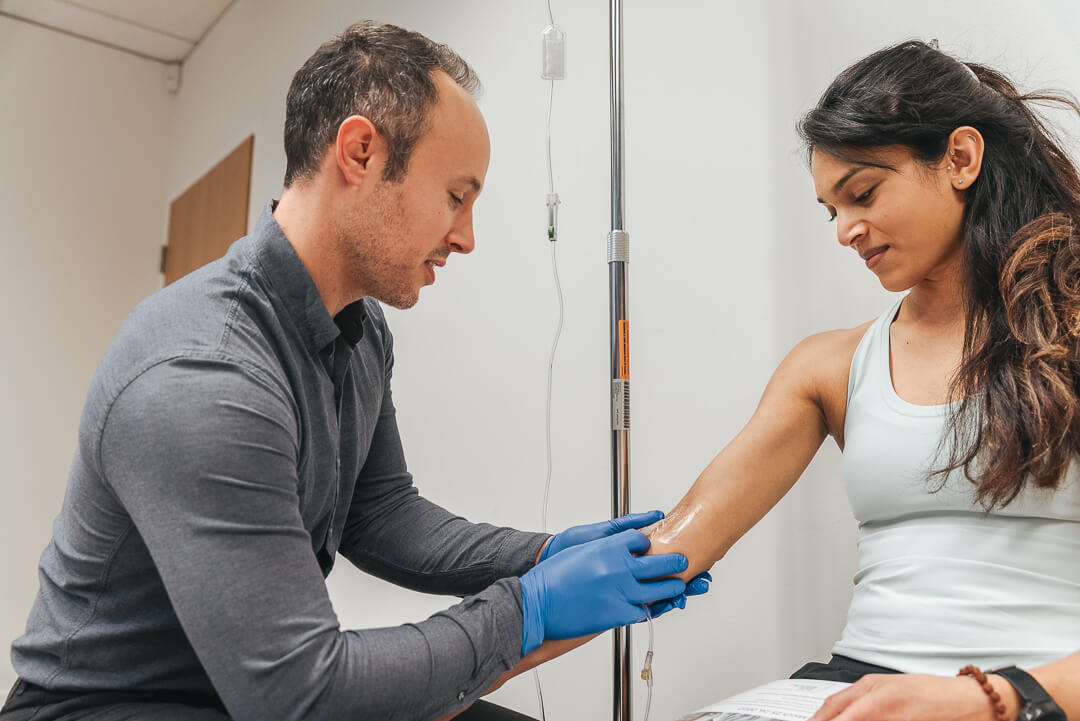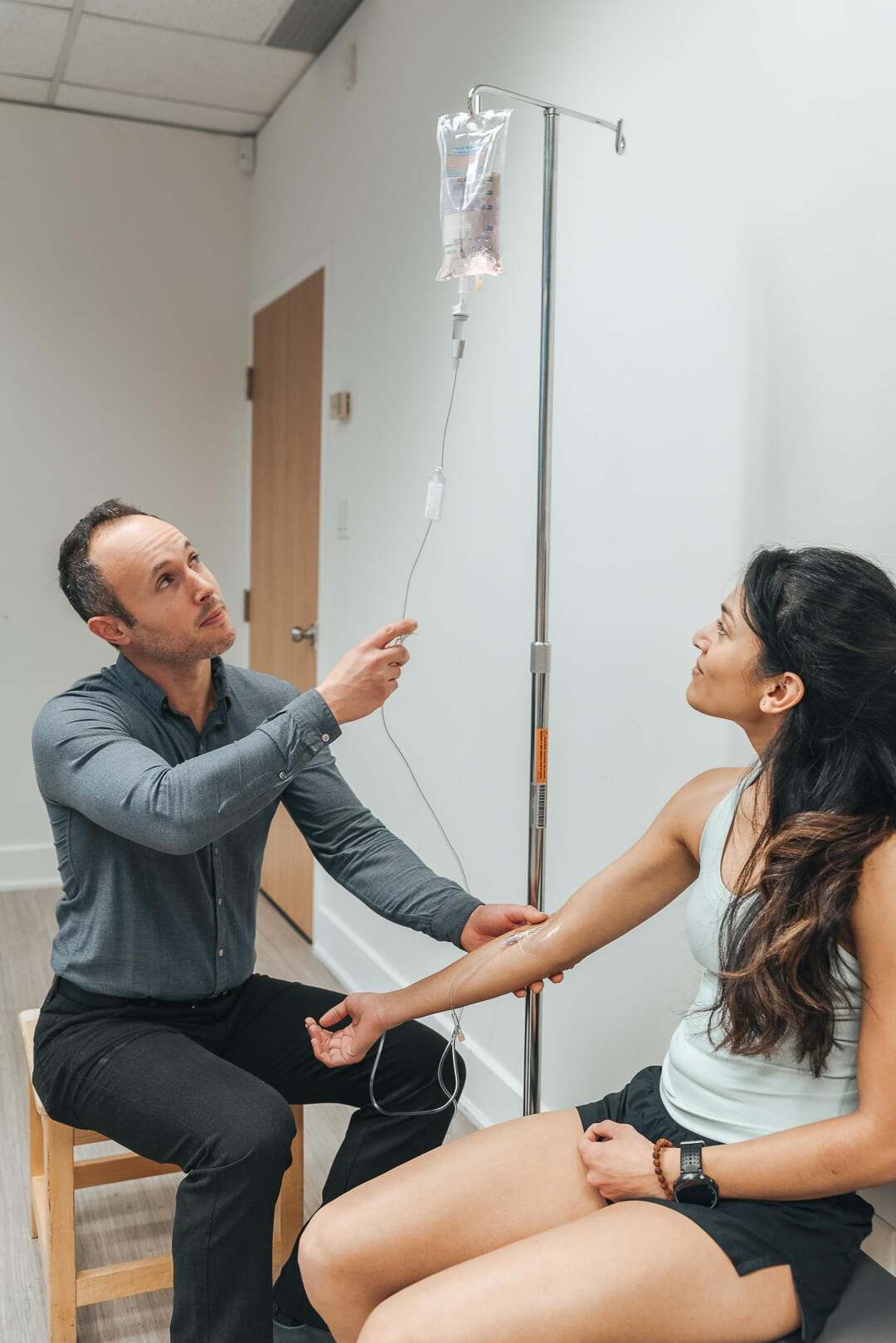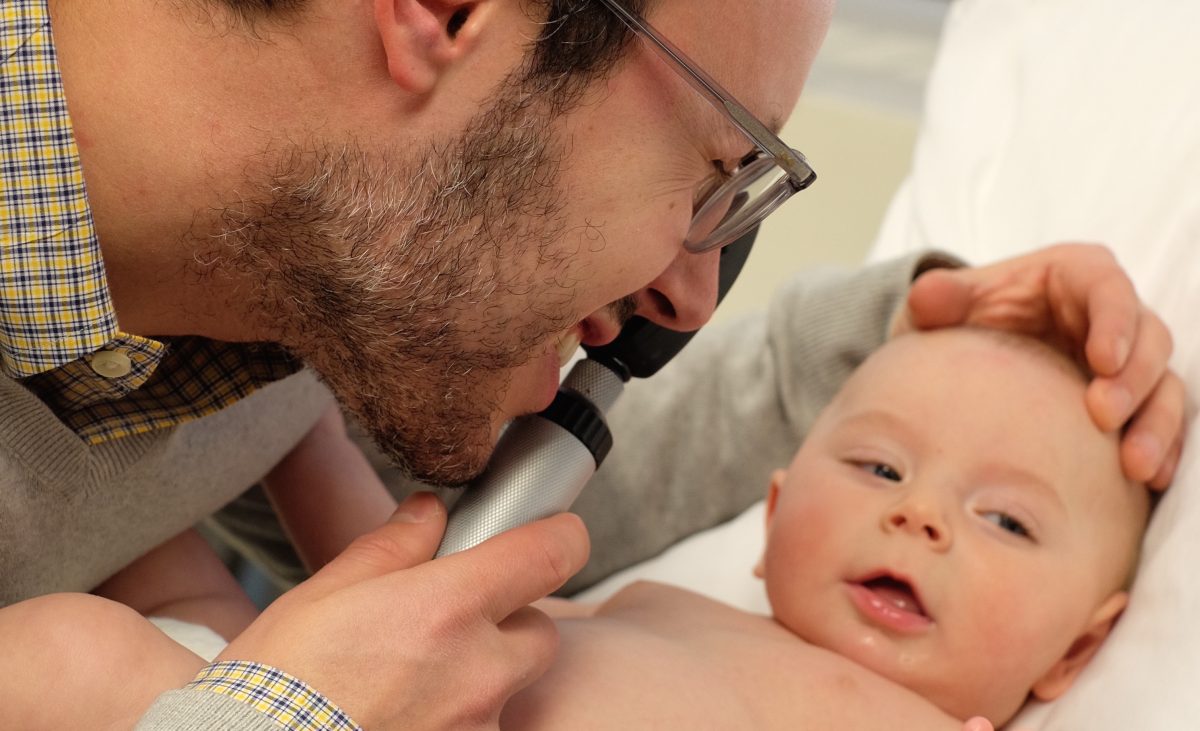Mouth breathing can seem like a small issue, but it can actually lead to a range of problems, from bad breath and difficulty sleeping to developmental issues in children. If you notice that your child is constantly breathing through their mouth, it’s important to take action. Here are 5 ways to combat mouth breathing in kids and ensure that your child is breathing properly.
1. Identify the Root Cause
The first step to combating mouth breathing is determining the root cause. Some common causes include allergies, enlarged tonsils or adenoids, or a deviated septum. Once you identify the cause, you can work with your child’s pediatrician to formulate a treatment plan. Treatment may involve medication, surgery or lifestyle changes like avoiding certain foods or environmental allergens.
Chronic nasal congestion may be a cause of mouth breathing in children. If structural and allergic causes have been ruled out, it may be a good idea to test for food sensitivities. Food sensitivities develop as a result of a slightly different immune response than allergies. A naturopathic doctor or functional medicine doctor can requisition a blood test that will identify any food sensitivities in your child. Sensitivities will often resolve after 3-months of abstinence at which time these foods may be re-introduced into the diet.
2. Practicing Breathing Exercises
Teaching kids proper breathing techniques can help them switch from mouth breathing to breathing through their nose. Encourage them to take long, deep breaths through their nose and exhale slowly through their mouth. You can also make it into a fun game by challenging them to see how long they can hold a deep breath in their nose or how long they can exhale.
A fantastic resource for nasal breathing exercises as well as some of the scientific literature around mouth breathing vs. nasal breathing can be found through the Buteyko Clinic
3. Promote Good Sleep Hygiene
Many kids breathe through their mouth while sleeping, so it’s crucial to establish good sleep hygiene to prevent mouth breathing before it starts. Make sure your child is sleeping on their back or side, as sleeping on the stomach can encourage mouth breathing. You may also consider using a humidifier, which can help to keep sinuses moisturized and reduce inflammation.
Here is a checklist for establishing good sleep hygiene in kids:
✅ Establish a consistent bedtime routine and consistent wake-up time every day.
✅ Avoid caffeinated drinks, large meals, and vigorous exercise late in the day.
✅ Create a calm, relaxing atmosphere in the bedroom by dimming lights and avoiding screens.
✅ Avoid napping during the day. If naps are necessary, keep them short (15-30 minutes) and at the same time each day.
✅ Keep bedroom temperature comfortable. A cool but not cold room of around 65 degrees is ideal for sleep.
✅ Make sure your child’s mattress is comfortable and supportive to ensure quality rest.
✅ Exercise regularly, although not too close to bedtime as this can make it harder to fall asleep quickly.
✅ Encourage your child to find activities that help them relax before bedtime such as reading or taking a warm bath or shower in preparation for sleep
4. Maintain Proper Oral Hygiene
Mouth breathing can cause dry mouth, which can lead to a range of oral health problems. Encourage your child to brush their teeth twice daily and to floss regularly to remove any debris that may have accumulated between their teeth. Also, make sure they stay hydrated so that their mouth stays moist and saliva can flow normally.
5. Be a Positive Role Model
Lastly, it’s important to lead by example. Kids are extremely observant, so if they see their parents breathing through their mouth, it can become normalized. Pay attention to your own breathing habits and make sure you practice good nasal breathing techniques in front of your kids. You can even lead by example by doing breathing exercises or attending yoga classes together.
Conclusion:
Mouth breathing may seem like a small issue, but it can lead to a range of problems for kids. By taking action early and addressing the root cause, you can help your child learn better breathing techniques and combat mouth breathing. Encouraging proper nasal breathing techniques, practicing good sleep hygiene, promoting oral health, and being a positive role model are all excellent strategies for combatting mouth breathing in children. If you’re worried about your child’s breathing habits, talk to their naturopath or pediatrician to determine the best course of action.
Fluoride is a mineral that has been added to many public water supplies since 1945 to help prevent tooth decay. It is important to maintain a balanced amount of fluoride in our water, as too little can lead to dental problems and too much can cause more serious health issues. But what about the effects of fluoride on our hormones? Can the amount of fluoride in tap water be causing hormone disruption? Let’s look at the facts.
What is Fluoride?
Fluoride is an essential mineral found naturally in soil, water, and food. It helps protect teeth from decay and can even help reverse early signs of cavities. In some cities, fluoride is added to the public drinking water supply, either through the addition of hydrofluorosilicic acid or sodium silicofluoride. This process has been used since 1945 and has been shown to reduce cavities by 15-40%. However, there have been some studies linking high levels of fluoride consumption to potential health risks.
Does it Affect Hormones?
Some studies suggest that fluoride may act as an endocrine disruptor, meaning it could interfere with the body’s natural hormones. The hormones affected most by fluoride are those related to thyroid function and reproductive health. Research suggests that exposure to high levels of fluoride could lead to decreased levels of these hormones in both humans and animals. Additionally, studies have shown that increased exposure to these hormones can cause changes in behavior and impaired cognitive development in children.
The World Health Organization recommends that water fluoride concentrations should not exceed 1.5 milligrams per liter in order to minimize potential health risks associated with chronic exposure. More specifically, the WHO suggests an optimal concentration of fluoride in drinking water of 0.5-1.0 mg/L as it is associated with lower rates of dental caries and minimal risk of fluorosis. Furthermore, a 2020 study found that fluoride intakes lower than 1.1 milligrams per day are safe for adults and 0.7 milligrams per day is safe for children up to age 8.
However, more research needs to be done before we can definitively say that consuming fluoridated tap water affects hormone production negatively. Currently, the US Department of Health & Human Services recommends a range for optimal amounts of fluoride for public drinking water supplies (0.7-1.2 mg/L). Most municipal systems fall within this range; however, if you live outside this range you may want to consider having your local water tested for contaminants like lead and arsenic as well as excessive levels of fluoride before drinking it regularly or using it for other household activities such as cooking or bathing.
Water Testing
With the potential risks of consuming high levels of Fluoride, it is essential to know the concentrations of Fluoride, as well as other minerals, in your tap water. Fortunately, there are several options that enable people to test their water for Fluoride and other minerals. The most common methods are testing strips and drops or sending a sample off to a laboratory and requesting a Fluoride test. Here is a link to one such company that will send you a home testing kit MyTapScore
Fluoride Filtration
There are several common ways you can filter out fluoride from your water. The most straightforward approach is through a reverse osmosis system which will filter out any particles larger than 0.0001 microns; this includes Fluoride and other contaminants like heavy metals or bacteria. Another popular filtering technique involves an activated alumina filter media. When the Fluoride molecules are exposed to this filter media, they become trapped permanently, ensuring the purity of your drinking water.
Finally, distillation systems can also be used for Fluoride filtration – allowing only vaporized water through the system while trapping Fluoride ions in its solid form before returning it as pure liquid. Here is a link to a helpful article on the best rated filter systems of 2021. It includes low cost table top options as well as full house systems. Personally, I purchased the Clearly Filtered System with three filters. This will last for approximately one year.
Conclusion
There is still a lot we don’t know about how fluoride affects our bodies—including how it might affect hormone production. While some studies suggest that high levels of fluoride consumption could disrupt our natural hormone balance, more research needs to be done before any definitive conclusions can be drawn. In the meantime, it is important for consumers to understand their local water quality so they can make informed decisions about their health and safety when using tap water for drinking or other purposes like cooking or bathing.
With knowledge comes power! Knowing your local tap water quality will help keep you safe from excessive levels of contaminants like lead and arsenic as well as potential hormone disruptors like excess amounts of fluoride present in your tap water supply system.
Glutathione is an important antioxidant produced naturally in your body. It helps to protect cells from damage, preserve energy levels, and improve overall health. Recently, glutathione infusions have become increasingly popular as a way to give your body an extra dose of this essential antioxidant. But what is the science behind it? Let’s take a closer look at glutathione infusion and its potential benefits for your health.
What is Glutathione?
Glutathione is an antioxidant found in all cells in your body and plays an important role in many biological processes. It acts as a detoxifying agent, helping to rid the body of toxins such as heavy metals and other pollutants. Additionally, glutathione helps to regulate cell growth, DNA repair, immune system responses, and antioxidant activity. In short, having sufficient amounts of glutathione in your system allows for optimal functioning of all these processes.
The Benefits of Glutathione Infusions
Although you can get some glutathione through diet or supplements, one of the best ways to increase your levels of this powerful antioxidant is through a glutathione infusion. An infusion involves injecting a concentrated solution of glutathione directly into the bloodstream. This ensures that the maximum amount of this nutrient is delivered quickly and efficiently into the body where it can be put to immediate use.
Studies have shown that these infusions can help reduce inflammation caused by oxidative stress and improve detoxification pathways in the body. Some research has even suggested that regular infusions may help improve symptoms associated with chronic illnesses like diabetes and Parkinson’s disease.
Glutathione infusions are also commonly used as part of anti-aging treatments since they help to reduce wrinkles and dark spots on skin due to their ability to reduce oxidative stress from ultraviolet radiation exposure. In addition to providing aesthetic benefits, these infusions may also help boost energy levels due to their ability to restore depleted nutrient stores in the body.
Glutathione and Parkinson’s Disease
Several studies have looked into Glutathione’s potential for treating Parkinson’s disease, a chronic neurodegenerative disorder characterized by motor and cognitive impairment.
A study published in 2015 that looked at both animal models and human clinical trials found that intravenous glutathione could provide symptomatic relief when used as an adjunct to conventional treatments. This research showed that it was safe, well-tolerated, and effective at reducing motor symptoms such as rigidity and bradykinesia.
More recently, a 2018 systematic review of clinical evidence found that using glutathione injections in combination with levodopa was significantly more effective than standard treatment alone. The results suggest that glutathione may help alleviate the motor symptoms associated with Parkinson’s while also potentially mitigating side effects from traditional medications.
Overall, several studies have shown promising findings indicating that intravenous glutathione can improve motor symptoms associated with Parkinson’s disease. As more research is conducted, it may become an increasingly viable option for patients seeking additional treatment options.
Glutathione in aesthetic and anti-aging medicine
Intravenous glutathione has become a popular choice for aesthetic and anti-aging applications in recent years. Research has suggested that it may be a safe and effective way to improve skin complexion, reduce signs of aging, and increase overall appearance.
A 2017 study from the University of Messina looked at the use of glutathione injections as an anti-aging treatment for the face and neck. The study found that using intravenous glutathione was an effective means of reducing wrinkles and improving skin texture, elasticity, tone and firmness. It also appeared to have some protective effects against UV radiation-induced damage such as pigmentation, inflammatory reactions, and skin atrophy.
In addition to its potential for treating the visible signs of aging, glutathione therapy has also been studied for its ability to correct pigmentation issues such as melasma and hyperpigmentation. A 2008 case series from Saudi Arabia showed that a combination of oral doses and topical application of glutithione could lead to significant improvement in facial discoloration over time.
Overall, there is growing evidence suggesting that intravenous glutathione can have beneficial effects on aesthetic medicine when used correctly. While more research is needed to confirm its efficacy in this area, it appears to offer promising results when used in conjunction with other treatments.
Glutathione and Multiple Sclerosis
Multiple sclerosis (MS) is an autoimmune disorder in which the body’s own immune system attacks and damages nerve cells. Recent research has suggested that glutathione may have potential for treating MS, as it is known to possess anti-inflammatory and antioxidant properties.
A 2006 study from Belgium explored the effects of intravenous glutathione on MS patients who had previously failed to respond to conventional therapies. After 8 weeks of treatment with glutathione, researchers found that the majority of patients experienced significant improvements in their physical symptoms. Notably, these improvements were sustained during 12 months of follow up.
More recently, a 2017 systematic review looked at the use of intramuscular or intravenous glutathione injections in combination with interferon beta-1a for treating MS relapses. The results showed that this approach was more effective than just using interferon alone, resulting in better control of symptoms such as motor weakness and visual impairment.
Overall, while further research is needed to fully evaluate its potential, there is evidence suggesting that glutathione injections may be a safe and effective treatment option for certain types of MS-related symptoms. In particular, they appear to be beneficial when used as an adjunct therapy alongside existing medications.
Glutathione and Diabetes
Glutathione has long been studied for its potential role in treating diabetes. Research has suggested that it may be effective at reducing oxidative stress and inflammation, both of which are associated with the development of type 2 diabetes.
In a 2002 study from the University of Modena, researchers looked at the effects of intravenous glutathione injections on 42 diabetic patients. After 12 weeks of treatment, participants had significantly improved their blood sugar levels, as well as their lipid profile parameters. Moreover, 82% of them experienced an improvement in back pain and other physical symptoms.
A more recent 2011 study examined the effects of oral supplementation with glutathione on diabetic patients who had previously failed to respond to insulin therapy. The results showed that those receiving glutathione achieved better glycemic control compared to those receiving just insulin treatment alone. Additionally, they had improved scores on measures such as body mass index (BMI) and waist circumference.
Overall, while more research is needed to fully understand its potential in this area, there is evidence suggesting that glutathione may be beneficial in managing some of the symptoms associated with diabetes. In particular, it appears to offer promising results when used together with conventional therapies such as insulin injections or oral anti-diabetic drugs.
Conclusion
Glutathione infusions are becoming increasingly popular around the world for the health benefits it provides. Results have been particularly impressive when used to treat conditions such as Parkinson’s Disease, Anti-aging, multiple sclerosis and diabetes. Despite this, it is recommended that potential users only seek experienced healthcare professionals who can accurately prescribe the correct dose for them. We know that glutathione infusions provide substantial outcomes but it must be taken responsibly, in order to reach its full efficacy. At the very least, we recommend doing research prior to embarking on any type of treatment journey. To discover more information about our services and procedures involved in administering glutathione infusions please don’t hesitate to contact us today – we’d be more than happy to answer any questions or queries you may have!
Sources
Sharma V., et al., “Intravenous administration of reduced glutathione: A potential approach for therapy of patients with Parkinson’s Disease,” Neurochem Res (2015), doi: 10.1007/s11064-015-1510-6
Jubinsky P., et al., “Glutathione Therapy for Parkinson’s Disease: A Systematic Review,” Oxidative Medicine & Cellular Longevity (2018), doi: 10.1155/2018/1283082
De Keyser J., et al., “Intravenous glutathione in multiple sclerosis,” Neurology (2006), doi: 10.1212/01.wnl.0000232530.30045.bd
Batocchi AP., et al.,”Glutathione plus Interferon Beta-1a Versus Interferon Beta-1a Monotherapy for Multiple Sclerosis Relapses: A Systematic Review,” Neurol Clin Pract (2017), doi: 10.1097/ncp.0000000000000455
Cogliandro AF., et al., “Glutathione iv infusion: An innovative tool for antiglycation strategy,” J Eur Acad Dermatol Venereol (2017), doi: 10.1111/jdv.14146
Almutairi A., et al., “Oral Glutathione as a Novel Treatment Modality for Melasma,” Dermatol Res Pract (2008), doi: 10.1155/2008/420464
Mocchegiani E., et al., “Oxidative Stress Parameters in Diabetics Before and After Intravenous Glutathione Therapy,” Free Radic Res (2002), doi: 10.1080/1071576021000051371
Kumar AK., et al.,”Metabolic Effects of Oral Glutathione Therapy in Type 2 Diabetics Not Responding to Sulfonylurea Drugs,” Nutrition & Metabolism (2011), doi: 10.1186/1743-7075-8-71
Intro to common IV therapies
Intravenous therapies such as The Myers Cocktail and High Dose Vitamin C have been used to treat a variety of health conditions for many years. A growing body of research is showing the potential benefits of using these therapies to improve the lives of patients with chronic illness.
Studies have shown that the Myers Cocktail can help improve symptoms related to fibromyalgia, chronic fatigue syndrome, asthma, and allergies.
Additionally, high dose Vitamin C has been found to reduce symptoms associated with cancer, positively impact glucose levels in type 2 diabetics, and may even have benefits in pneumonia, sepsis, and hepatitis. For those looking for a natural way to address a variety of ailments, these two treatments offer much promise.
In this article we will explore the latest research on The Myers Cocktail and High Dose Vitamin C so that you can make an informed decision about your health care options. We’ll look at what each treatment is intended to do and how their effects are being studied in clinical settings. We’ll also discuss potential side-effects and any precautions that should be taken when considering either treatment option.
Finally we’ll take a look at some common questions about both treatments. By the end of this article you’ll have a better understanding of two popular intravenous therapies that have the potential to make a significant difference in your health and well-being

Myers Cocktail
The “Myers Cocktail” is a popular intravenous nutrient infusion therapy that consists of a mixture of vitamins, minerals and other compounds. Several studies have been published showing the benefits of the Myers Cocktail for improving various medical conditions.
Fibromyalgia
A 2006 study found that after one to three treatments of Myers Cocktail, patients with fibromyalgia experienced a marked improvement in their symptoms. Specifically, the study noted a decrease in pain and fatigue, as well as a decrease in feelings of depression associated with the condition. Moreover, the infusion therapy was reported to significantly reduce levels of tenderness at acupuncture points and other areas associated with fibromyalgia. Additionally, participants also reported an increase in energy levels following treatment.
Further research conducted by the same authors revealed further positive results from Myers Cocktail infusions. A survey of 139 registered nurses who had received at least one infusion reported improved moods, increased energy, enhanced sleep quality and better overall wellbeing after treatment. In terms of pain reduction specifically, the survey indicated that more than two thirds of participants felt significant relief after just one session. Furthermore, the study noted that there were no adverse effects recorded during or after any treatments administered.
Overall, this body of research indicates that Myers Cocktail can be an effective form of treatment for individuals suffering from fibromyalgia due to its ability to reduce pain and fatigue while also improving mood and energy levels. Further studies are needed to conclusively understand the full extent of this type of infusion therapy’s efficacy in treating fibromyalgia-related symptoms. In 2015 I did a case study using the Myers Cocktail for a patient with Fibromyalgia. Check out the results by clicking HERE.
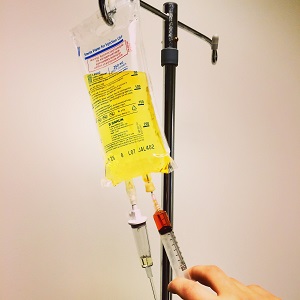
Chronic Fatigue
A 2008 study investigated the effects of the Myers Cocktail on patients with chronic fatigue syndrome (CFS). This was a double-blind, placebo-controlled trial of six months duration involving 24 participants. During the trial period, all participants were given either the Myers Cocktail or a placebo intravenously twice per week.
After six months, there was a marked improvement in energy levels and decrease in fatigue among participants who had received the Myers Cocktail compared to those who had been given a placebo. Specifically, individuals treated with the Myers Cocktail reported an average increase in energy levels of 41% and a reduction in fatigue by an average of 45%. In contrast, there was no significant change in energy levels or fatigue among those receiving the placebo.
The researchers also noted other positive effects of treatment including improved sleep quality and better mental clarity. Furthermore, they found that participants treated with the Myers Cocktail experienced less pain and an overall improvement in quality of life. These improvements were maintained over time, with no adverse effects reported during or after treatment.
Overall, this study demonstrates that the use of the Myers Cocktail may be beneficial for treating CFS as it appears to reduce fatigue levels as well as improve energy levels, sleep quality, mental clarity, pain and overall quality of life for those affected by CFS. Further research is needed to determine whether this is an effective long-term treatment option for CFS sufferers.
Allergies and Asthma
The 2015 systematic review investigated the use of intravenous vitamin therapies as an adjuvant therapy for allergies and asthma. The researchers analyzed the efficacy of popular infusions, such as the Myers Cocktail, in treating these conditions. Overall, their findings indicated that these therapies may be beneficial in reducing allergic reactions and improving symptoms of asthma. Specifically, their studies demonstrated a decrease in skin prick test reactivity against common allergens, such as dust mites and pollen, among patients who had received IV vitamin treatments. Additionally, some patients reported a reduction in airway resistance after treatment. Moreover, vitamin C was found to have anti-inflammatory properties that could help in easing symptoms associated with bronchial asthma. Finally, the review found that certain nutrients present in IV vitamins are important for the maintenance of a healthy respiratory system.
Overall, the studies indicated that there is evidence to suggest that intravenous vitamin therapies can be utilized as an adjuvant therapy for allergies and asthma when used alongside conventional medications. This is because they provide a multifaceted approach to tackling these conditions by alleviating both allergic responses and airway constriction caused by inflammation. As such, this type of therapy may offer additional benefits for those suffering from allergies or asthma compared to traditional medicaments alone.
Intravenous Vitamin C
Vitamin C is an essential vitamin with numerous health benefits, and high dose intravenous (IV) infusions of Vitamin C have been used to treat a variety of medical conditions.
Cancer
The 2017 study conducted by researchers at the University of Kentucky Markey Cancer Center revealed that high-dose vitamin C IV infusion could be an effective form of treatment for cancer patients. The study included 20 participants who were randomly assigned to receive either a placebo or infusions of high-dose vitamin C. After 8 weeks, the researchers evaluated the participants’ symptoms and found that those who received the infusions experienced notable reductions in pain, fatigue, anxiety, and depression.
Not only did the participants experience a significant improvement in physical and mental health, but their overall quality of life was also enhanced. Furthermore, blood work showed that the patients’ levels of biomarkers associated with tumor activity had decreased significantly. This suggests that high-dose vitamin C IV infusion may actually help reduce tumor growth as well. While these findings are promising, more research is needed to determine whether this treatment is truly effective for cancer patients in the long term.

Diabetes
A study, conducted in 2018, found that high-dose vitamin C IV infusion can have positive effects on diabetes symptoms and glucose levels in individuals with type 2 diabetes mellitus. Using a randomized controlled trial, the research team found that after 30 days of treatment with vitamin C infusions, patients showed significant improvements in their HbA1c levels and fasting blood glucose levels, compared to a control group receiving no treatment.
Additionally, those receiving the vitamin C infusions reported lower rates of fatigue and improved quality of life. The researchers also noted that the therapy was well-tolerated with no serious adverse effects reported.
Moreover, the study revealed that regular treatments with high-dose vitamin C may be beneficial for managing diabetes symptoms over time. This is due to its antioxidant properties which can help reduce oxidative stress and inflammation caused by elevated glucose levels in T2DM patients.
Furthermore, it has been suggested that this type of therapy could be combined with conventional drug treatments to better manage the condition. Ultimately, these findings indicate potential therapeutic benefits of high-dose vitamin C infusions for those living with type 2 diabetes mellitus.
Vitamin C IV in various conditions
A 2019 systematic review conducted by researchers evaluated the effectiveness of high-dose vitamin C IV infusions in treating various medical conditions, such as cancer, pneumonia, sepsis and hepatitis. The study included 21 trials with a total of 590 participants. The researchers concluded that evidence was present to support the use of vitamin C IV infusions as an adjunctive therapy for some conditions.
For instance, one trial found that intravenous high-dose vitamin C improved overall survival rate in patients with advanced pancreatic cancer compared with conventional chemotherapy alone. Another study showed that vitamin C IV infusion helped reduce mortality rate among sepsis patients. Regarding pneumonia, high-dose vitamin C infusions were also found to improve quality of life and reduce hospital stay compared to placebo. When it comes to hepatitis, one trial reported improvement in liver function tests following administration of vitamin C IV infusion.
Overall, the findings from this systematic review suggest that there is potential for high-dose intravenous vitamin C being used as an adjunct therapy for certain medical conditions such as cancer, pneumonia, sepsis and hepatitis.
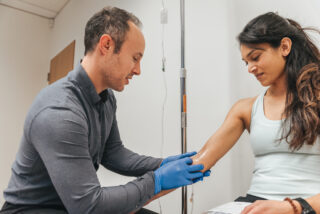
Conclusion
Myers Cocktail and High Dose Vitamin C IV therapy have both been shown to be beneficial in various different health conditions. While Myers Cocktail is particularly helpful for Fibromyalgia, Chronic Fatigue Syndrome, Allergies and Asthma, high dose Vitamin C has been linked to improved outcomes in cancer, diabetes, pneumonia, sepsis and hepatitis.
The research around the effects of these therapies is still ongoing and it is vital that further studies are conducted to better understand their potential for treating a variety of illnesses. At the same time however, more clinical trials should also be undertaken to ascertain their effectiveness when compared to other treatments currently available.
Although there are many potential benefits associated with both the Myers Cocktail and High Dose Vitamin C IV therapies, it is important that individuals consult with their IV therapy specialist before pursuing either treatment. This will ensure that they receive the most appropriate care for their individual needs and circumstances. For more information on IV therapies offered at my clinic Click Here
References
- The 2006 study on the Myers Cocktail for fibromyalgia can be found in Bloom, 2006.
- The 2008 study on the Myers Cocktail for chronic fatigue syndrome (CFS) can be found in Forsyth, 2008.
- The 2015 systematic review of intravenous vitamin therapies for asthma and allergies can be found in Brown et al., 2015.
- The 2017 study on high dose vitamin C IV infusion and cancer can be found in Kanematsu et al., 2017
- The 2018 study on high dose vitamin C IV infusion and type 2 diabetes Mellitus (T2DM) can be found in Maeda et al., 2018
- -The 2019 systematic review of high dose Vitamin C IV infusions for various medical conditions can be found in Wang et al., 2019(https://www.ncbi.nlm
Intro to Naturopathic Pediatrics
Naturopathic Pediatrics is an alternative health system that focuses on the whole person. It combines modern scientific knowledge and traditional natural medicine techniques to help children achieve optimal health. Let’s explore some of the benefits of Naturopathic Pediatrics so you can make an informed decision on behalf of your child’s health.
Holistic Approach to Wellness
Naturopathic Pediatrics takes a holistic approach to wellness, which means that it considers all aspects of a person’s life. Physical health, mental health and emotional health are all taken into account when providing treatment. This type of approach is especially beneficial for children since it focuses on treating the cause of illness in addition to its symptoms. It also allows practitioners to work closely with parents and their children in order to create a tailored plan that will best address the specific needs of each individual patient.
Safe and Effective Treatments
Naturopathy offers safe and effective treatments for many common childhood illnesses such as allergies, asthma, ear infections, colds and flus. Instead of relying on pharmaceutical drugs or invasive therapies, Naturopathy focuses on identifying underlying causes and using natural remedies to improve overall health without harsh side effects. Natural treatments may include dietary changes, herbal remedies, homeopathy, acupuncture, massage therapy or lifestyle modifications like increased physical activity or improved sleep hygiene.
Additionally, Naturopathy can help support the long-term health of your child by strengthening their immune system and helping them develop healthy habits that will last into adulthood.
Naturopaths also offer a wide range of functional testing aimed at optimizing health and investigating the root cause of disease. Some of these tests include: food sensitivity testing, organic acids testing, hormone profiles and nutritional deficiencies. Check out some of the tests we offer by clicking HERE
Research on Naturopathic care for children
Naturopathic care for children is becoming increasingly popular among parents concerned about the health and wellbeing of their kids. Research from the National Institutes of Health (NIH) has demonstrated that naturopathic care can help reduce common childhood illnesses like colds, flu and digestive issues 1.
Additionally, studies from the American Medical Association (AMA) have shown that naturopathic treatments offer powerful healing benefits when used to treat chronic ailments such as asthma, diabetes or ADD/ADHD 2.
Other research indicates that naturopathy can also be a great way to avoid the use of unnecessary medications in children, making it a viable option for parents who are looking for an alternative form of healthcare for their young ones 3.
Personalized Care
The personalized care provided by naturopaths is invaluable when it comes to providing quality healthcare for your child. Your naturopath will take time to get to know both you and your child in order to determine the best course of action for their particular situation. They will provide guidance and support throughout the entire process in order to ensure that your child’s needs are being met at every step along the way. Additionally, naturopaths often provide resources such as handouts or websites that can be utilized at home in order to further empower both parents and children throughout their journey towards optimal health.
Conclusion
The benefits of Naturopathic Pediatrics are numerous: from its holistic approach to wellness; its safe and effective treatments; its personalized care; there is no doubt why this form of alternative medicine is gaining popularity among parents seeking better health care options for their children. If you’re looking for an alternative approach focused on restoring balance within your child’s body then consider giving Naturopathic Pediatrics a try today!
Ready to book an appointment? Click HERE
Sources
1 https://www.ncbi.nlm.nih.gov/pmc/articles/PMC4789024/
2 https://jamanetwork.com/journals/jamapediatrics/fullarticle/2550272
3 https://www.natureandforesttherapy.org/naturopathy-for-children
Do you have a child on the autism spectrum and are looking for ways to help them unlock their potential? If so, you’ve come to the right place. Believe it or not, natural treatments can make a tremendous difference when it comes to helping children with autism reach their full potential.
In this blog post, we’ll explore 10 naturopathic treatments that may provide relief from autism-related symptoms such as anxiety and social challenges. By arming yourself with knowledge about these therapies, you can find solutions tailored specifically to your child’s needs so that they can learn and grow into their best selves!
10 natural treatments for autism spectrum disorder.
Autism spectrum disorder (ASD) is a neurodevelopmental disorder characterized by difficulties with social interaction, communication, and repetitive behaviors. Some people with ASD also have sensory processing issues. Here are a number of natural treatments that can help improve the challenges associated with ASD.
1. Probiotics
Probiotics are beneficial bacteria that help support gut health. Research into probiotics and autism has revealed promising results.
In a randomized, double-blind study, children with ASD were given either active multi-strain probiotic or placebo for 12 weeks. The results demonstrated that the group taking the active probiotic had improved symptoms of autism such as increased social interaction, better communication, improved sleep habits and more positive mood.
Additionally, another study reported that when children with ASD were supplemented with specific strains of Bifidobacterium longum for four months, their symptoms associated with anxiety and depression were significantly reduced compared to those who took a placebo.
Moreover, in a study involving over 100 children with ASD and ADHD, researchers found that supplementation of Lactobacillus rhamnosus was effective in improving certain behaviors observed in these disorders. Taken together these studies demonstrate potential beneficial effects of supplementing probiotics in individuals with ASD.
2. Omega-3 fatty acids
In addition to their role in brain development and function, omega-3 fatty acids also have other potential benefits for people with ASD. Studies have shown that omega-3 supplements may improve focus, behavior, and social skills in children with ASD.
For instance, one randomized controlled trial found that children who took omega-3 supplements had better scores on tests of nonverbal communication and problem solving than those who did not. Other studies have suggested that taking omega-3 supplements can reduce irritability, depression, and anxiety symptoms in people with ASD.
Omega-3 fatty acids may also improve sleep quality in those with autism spectrum disorder. A 2020 study involving 51 participants showed that children given omega-3 supplements had improved sleep compared to those who were given a placebo. Additionally, some research suggests that taking omega-3 supplements may reduce hyperactivity levels in individuals with ASD.
Finally, there is evidence to suggest that omega-3 fatty acids may help to reduce inflammation associated with ASD symptoms. One study evaluated the effects of a fish oil supplement containing both EPA and DHA (two types of omega-3 fatty acids) on biomarkers of inflammation in adolescents and young adults with autism spectrum disorder. The results showed a significant reduction in markers of inflammation after 12 weeks of supplementation compared to baseline measurements.
Overall, the evidence suggests that omega-3 supplements may be beneficial for individuals with autism spectrum disorder by improving communication skills, reducing symptoms such as anxiety and depression, improving sleep quality, reducing hyperactivity levels, and decreasing inflammation associated with ASD symptoms.
3. Essential oils
Research has demonstrated the effectiveness of essential oils in helping to alleviate some of the symptoms associated with ASD, particularly in regards to social interaction and communication.
A study conducted by Zonfera et al (2015) found that lavender oil was effective at improving social interaction and communication in pediatric patients who had been diagnosed with ASD. The study employed a randomized trial design involving 30 children between the ages of 5 and 11. Each participant was evaluated by a team of clinicians, including psychiatrists and psychologists, before being randomly assigned to either an intervention group or control group. The intervention group received four weeks of aromatherapy sessions where they were exposed to lavender essential oil diffused via a vaporizer, while the control group received no exposure. After four weeks, participants in the intervention group showed significant improvements on measures such as verbal communication skills and overall social functioning compared to those in the control group.
A second study conducted by Hanna et al (2017) also found evidence that essential oils may be beneficial for individuals with ASD based on their findings involving lemon balm oil. This randomized clinical trial included 40 children between the ages of 6 and 12 who had been diagnosed with ASD. Participants were divided into two groups; one received lemon balm oil diffused through a vaporizer for four weeks while the other did not receive any exposure to aromatherapy treatments. At the conclusion of this study, participants who had been exposed to lemon balm oil showed improved sensory processing ability compared to those who did not receive treatment. In particular, they demonstrated better ability in responding correctly to auditory-based instructions which is indicative of improved sensory processing skill.
Overall, studies have consistently demonstrated that exposure to certain essential oils may help improve social functioning and sensory processing abilities for individuals with ASD. While further research is needed to explore more specific mechanisms behind these effects, current evidence does suggest that aromatherapy may provide some benefit for people affected by ASD when used alongside other forms of interventions such as cognitive behavior therapy and medications.
4. Music therapy
Music therapy has been widely studied in regards to its effectiveness in helping individuals with Autism Spectrum Disorder (ASD). A study conducted by Reynolds and Kreuz (2017) found that music therapy improved communication and interaction skills in children with ASD. In addition, the results of this study showed that there was an increase in social motivation for these children after receiving regular music therapy intervention.
Similarly, Darrow et al. (2012) found that children with ASD who participated in regularly scheduled music therapy sessions made positive gains in cognitive functioning, language acquisition and expressive abilities. Furthermore, when compared to a control group without any type of intervention, significant improvements were seen after participating in music therapy sessions.
In a more recent study, Berliner et al. (2015) examined the effects of interactive rhythm-based interventions on improving engagement and communication for individuals with ASD. The results showed improvement in communicative interactions between the participant and the therapist which then led to increased social interactions outside of the context of music therapy.
Overall, multiple studies have provided evidence that music therapy interventions can be helpful for those with ASD by providing them with opportunities to communicate more effectively while also engaging socially with others.
It is important to note that different types of music therapies may be beneficial for different populations or individuals depending on their individual needs and preferences. Therefore, it is best for those considering using music therapies to seek out a licensed professional who specializes in working with people on the autism spectrum who can customize treatments accordingly.
5. Magnesium
Magnesium supplementation has been linked to improvements in individuals with autism spectrum disorder (ASD). Studies have shown that magnesium plays a role in neurodevelopment, and can positively influence behaviors reported in those with ASD.
A 2017 meta-analysis of randomized, placebo-controlled trials found that magnesium supplementation reduced repetitive behaviors, hyperactivity, and irritability in individuals with ASD. Their review also showed evidence for improved sleep quality when magnesium was supplemented to children and adolescents with autism spectrum disorder. In addition to these randomized controlled trials, some open label studies suggest that adding magnesium to the diets of those with ASD can improve language abilities and socialization, compared to behavior before supplementation.
A more recent study published this year suggests that supplementing children with autism with magnesium could improve their cognition. The study reported improved scores on the Autism Treatment Evaluation Checklist (ATEC) when participants were given a combination of zinc and magnesium supplements over 10-12 weeks. There was no significant improvement noted for those given the placebo treatment instead. Additionally, results from a survey of parents suggested reduced levels of anxiety, as well as improvements in social interaction when their child had received the combination supplement treatment.
6. Massage
Massage therapy has been shown to have a wide range of benefits for people with Autism Spectrum Disorder (ASD). One interesting study in the Journal of Autism and Developmental Disorders found that massage therapy significantly improved communication and social interaction skills in children with ASD.
The study recorded the positive effects from an 8-week program of massage therapy, noting that participants were able to “establish eye contact for longer periods, initiate more conversations and become more comfortable when interacting with peers.” This is an important finding as improving these skills can help reduce anxiety in children with ASD and make it easier for them to connect with others.
Other studies have investigated the potential stress relief associated with massage therapy for people with ASD. One 2013 study examined how touch therapy through massage could aid in reducing tension and arousal levels among children with ASD. The results showed that after eight weeks of massage frequency, both tension levels and heart rate variability decreased significantly. Moreover, problems such as repetitive behaviors, self-injurious behavior, hyperactivity, emotional outbursts, physical aggression and communication difficulties were also reported to be reduced during the intervention period. Further research into this area has suggested that massage can be beneficial not only for tension relief but also for helping individuals with autism improve their sleep quality and reduce irritability levels.
In addition to its potential benefits associated with stress relief and communication skills, some studies suggest that massage may also be beneficial in improving muscle tone and managing spasticity in individuals living with autism spectrum disorder. A 2010 study published in Complementary Therapies in Clinical Practice looked at how myofascial release (MFR) could be used to improve muscle tone in children diagnosed on the autism spectrum who had significant motor coordination issues due to spasticity or hypotonia. The results showed that after 12 weeks of MFR sessions targeting specific areas of tightness or immobility, there was a significant improvement in muscle tone across all body regions tested. These findings indicate that therapeutic massage could help improve spasticity and overall mobility in individuals living with autism spectrum disorder; this could then lead to increased independence when performing activities such as walking or dressing oneself.
Overall, research shows that massage therapy has a range of potential benefits for people living with autism spectrum disorder; from improving communication skills to reducing tension levels or managing spasticity related mobility issues. As such, therapeutic massage should be considered as part of an integrated care plan when treating individuals diagnosed on the autism spectrum disorder.
7. Taurine
Taurine is an amino acid found naturally in the body and also in many foods such as meat, fish, dairy products, and eggs. Recent research has shown that supplementing with taurine may be beneficial for individuals with autism spectrum disorder (ASD).
Several studies have demonstrated that supplementation with taurine can improve communication skills, reduce repetitive behaviors, and even increase overall functioning in people on the autism spectrum.
A study from the University of California Los Angeles (UCLA) School of Medicine evaluated taurine supplementation on children aged 5 to 14 years old who were diagnosed with ASD. The results indicated that those given taurine showed significant improvements in their communication abilities and a decrease in repetitive behaviors compared to those receiving a placebo.
Another study conducted by researchers at Indiana University School of Medicine found that when a group of children with ASD were supplemented with taurine for 3 months, significant improvements were seen in symptoms such as language deficits, social impairments, and hyperactivity. These findings suggest that taurine may be an effective therapy option for managing some of the symptoms associated with ASD.
In addition to its role in reducing symptoms associated with autism, research has also suggested that supplementing with taurine can help to improve mood and reduce anxiety levels in people on the autism spectrum. A study published in Neurochemical Research found that adolescents given 500mg of taurine per day experienced a significant reduction in levels of anxiety and improved mood after only 6 months. These findings further support the potential benefits of supplementing with taurine for individuals on the autism spectrum as well as other population groups.
8. Diet
Dietary therapies have been studied as a potential treatment for autism spectrum disorder (ASD). Research has demonstrated that special diets may help improve the behavioral symptoms of ASD. For example, one study found that a gluten-free/casein-free (GFCF) diet helped reduce irritability, hyperactivity and stereotypic behavior in children with ASD.
Additionally, a recent Cochrane review concluded that there is evidence to support the use of GFCF diets and other dietary approaches to improve communication, social interaction and overall functioning for individuals with ASD.
Other studies have suggested that diets that are low in carbohydrates and high in proteins may be useful for reducing challenging behaviors in people with ASD.
Personally, I have also seen benefit in food sensitivity testing for children and adults with ASD. Food sensitivities can place an added burden of low level inflammation on individuals with ASD. Once food sensitivities are identified and eliminated improvements in social behaviors and sleep are often seen within a couple of months. For more information on food sensitivity testing click here.
9 Yoga
Studies on yoga and autism have reported promising results. A systematic review of 12 studies on yoga for various forms of autism found that it improved social behaviors, communication skills, and overall functioning in children.
Another study explored the effects of a specialized yoga program designed specifically for children with autism and found that participants showed significant improvements in mood, motor behavior, communication abilities, and overall well-being.
Researchers believe that mindful practices like yoga may be beneficial for individuals with autism spectrum disorder due to their calming effects on the body and mind. For example, a study on mindfulness-based treatments for autism spectrum disorder suggested that practicing breathing exercises and postures can reduce challenging behaviors. Additionally, research has shown that yoga helps improve focus, concentration, sensory integration abilities, communication skills, self-regulation skills, flexibility in activities of daily living (ADLs), as well as overall quality of life for those with autism spectrum disorder.
Moreover, research suggests that yoga can help improve cognitive performance by improving attention levels and reducing stress hormones such as cortisol. One study looked at the effects of a guided meditation therapy program on cognitive functions in children with autism spectrum disorder and found that those who participated experienced improved verbal memory scores and had better working memories than those who did not participate in the program.
Overall, there is an increasing body of evidence suggesting that regular practice of yoga can be beneficial for people with autism spectrum disorder in multiple ways. Practicing mindful exercises like yoga helps reduce stress levels while also providing a calming effect to both mind and body which can ultimately help enhance social interactions as well as communication skills in these individuals.
10 Mindfulness meditation
A study conducted by Sun and colleagues (2015) demonstrated the positive effects of mindfulness meditation on children with autism spectrum disorder. In this study, the participants were split into two groups: those that received mindfulness-based therapy and those that did not. The results showed that those in the mindfulness group had significantly higher levels of attentional focus than those in the control group. Furthermore, their parents reported a decrease in anxiety and depression symptoms in both groups.
Another study published by Zakaria et al. (2013) looked at the effects of mindfulness interventions on adults with autism spectrum disorder. The study found that participants who participated in the mindfulness meditation intervention reported significant improvements in overall well-being and quality of life, as well as reductions in anxiety and depression levels compared to those who did not receive the intervention.
Finally, a systematic review conducted by Sze et al. (2017) examined how mindfulness-based interventions can help improve social functioning among individuals with autism spectrum disorder. The reviewers concluded that there is evidence to suggest that mindfulness may be an effective tool for improving social functioning due to its ability to reduce stress and increase self-awareness. This may then lead to improved interactions with others, including family members and peers, which could ultimately result in more successful social relationships over time.
Naturopathic treatment for your child with autism
There is no one-size-fits-all answer when it comes to choosing the best naturopathic treatment for a child with autism. However, there are a few things to keep in mind when making this decision.
First, it’s important to consult with a qualified naturopathic doctor to get a customized treatment plan that is tailored to the needs of your child. There are many different naturopathic treatments available, and each one may be more or less effective depending on the individual child’s circumstances.
Some of the most common treatments used in naturopathy include dietary changes, supplements, homeopathy and lifestyle interventions. It’s important to work with your doctor to find the right combination of treatments for your child.
Additionally, it’s important to be patient and allow enough time for the treatments to take effect. Many children show positive results within a few months, but some may take longer depending on their individual situation.
Overall, choosing the best naturopathic treatment for a child with autism can be a complex process. However, by working closely with a qualified doctor and being patient, you can help your child achieve improved health and quality of life.
A concussion is a mild traumatic brain injury caused by a bump, jolt, or blow to the head. If you’ve been diagnosed with a concussion, you may be wondering what you should do next. This blog post will provide some helpful tips on how to manage your recovery process.
Allow Your Brain Time to Heal
First and foremost, it’s important to give your brain the time it needs to heal after sustaining a concussion. It can take anywhere from several days to several months for someone with a concussion to feel completely better. In general, most people experience symptoms for up to three weeks following the injury. During this time, it’s important that you rest both mentally and physically in order for your symptoms to improve.
Recent research has shown that the amount of rest required after a concussion to help a person heal and recover is more than what was previously thought. In order for an individual to experience the most beneficial results, it is suggested that they take at least 24 hours of rest following a concussion. This includes not only avoiding physical activity, but also limiting activities that require mental exertion and concentration, such as watching television or playing video games. It is important to note that this initial period of rest should be followed by gradually increasing activity as symptoms improve, with sufficient breaks built in throughout the day.
Additionally, studies suggest that adolescents need between 10-14 days of rest in order to achieve full recovery from a concussion. This extended period of rest could include reduced physical or cognitive activities and even temporarily stopping school or work obligations if necessary.
Ultimately, the amount of rest required after suffering a concussion will vary depending on each individual’s specific needs and symptoms. However, research has demonstrated that taking at least 24 hours of complete rest initially and then gradually increasing activity levels as symptoms improve can be an effective way for individuals to recover faster and live healthier lives.

Diet after concussion
Eating a diet that is rich in essential nutrients and vitamins can be an important part of recovery after concussion. Eating plenty of fruits, vegetables, and lean protein can help support brain health and provide the necessary nutrients to aid in neurocognitive functioning after a concussion. Studies have shown that consuming foods with omega-3 fatty acids, such as fish and nuts, may help reduce the risk of long-term cognitive impairment associated with concussions (Hoffman et al., 2015).
In addition, research suggests that eating large amounts of antioxidant-rich foods like berries, spinach, and kale can help to protect against inflammation caused by traumatic brain injuries (TBIs) (Fotuhi et al., 2016).
Furthermore, having adequate levels of vitamin D has been linked to improved outcome from TBIs (Xiao et al., 2018). Therefore it is important for individuals who have experienced concussions to consume a balanced diet that includes several servings of fruits and vegetables daily along with lean protein sources like fish or poultry. Additionally, eating smaller meals throughout the day rather than three large meals may also improve cognitive functioning after a concussion (Cantu & Nowinski, 2007).
Finally, drinking adequate amounts of water throughout the day is essential for maintaining proper hydration which helps support healing processes in the brain following traumatic injury. With these considerations in mind, dietary changes can be an invaluable tool in supporting recovery from concussion.

Exercise following concussion
Exercise can be an incredibly helpful tool for recovery after concussion. Physiotherapy or physical therapy (PT) is a common way to help individuals recover from concussions, and exercise plays an important role in this process.
Exercise has been shown to reduce symptoms of concussion such as headaches, dizziness, and difficulty concentrating (Giza et al., 2020). It can also improve overall balance and coordination, which are both key components of post-concussion recovery (Peterson & Pfister, 2020).
Additionally, exercise can help reduce anxiety and depression after concussion by providing structure and routine to each day (Roche et al., 2019). Studies have found that aerobic exercise is especially beneficial in post-concussion recovery. Aerobic exercises such as cycling or walking can increase blood flow to the brain and may also stimulate neuroplasticity in the brain cells that were affected by the concussion (Cantero et al., 2017).
By providing a safe environment with gradual increases in intensity over time, PTs are skilled at helping individuals develop an exercise plan tailored to their needs that will support their recovery. Thus, when used properly under professional guidance, exercise can be an effective tool for promoting healing after a concussion.
Sleep
Getting enough quality sleep after a concussion is one of the most important things to aid in recovery. When one suffers from head trauma, their body needs more time to heal and rest than it usually does. Without adequate rest, the healing process can be significantly delayed or slowed. Quality sleep not only allows for healing to occur but also helps individuals maintain balance, improve decision-making, and promotes physical and mental wellbeing (Liu & Ledden, 2020).
Individuals with concussions should get between seven and nine hours of quality sleep each night as recommended by the National Sleep Foundation (NSF, 2021). This amount of restful sleep may vary depending on individual circumstances.
Strategies such as avoiding caffeine after lunchtime, limiting exposure to bright screens before bedtime and establishing a regular bedtime routine can also help support recovery from concussion-related symptoms (Callaghan et al., 2019). Creating a comfortable sleeping environment free from noise, light and other distractions is important for allowing the body’s natural healing processes to occur during sleep (Freeman et al., 2017).
In addition to increasing restful sleep, individuals with concussions may benefit from engaging in activities such as yoga or mindfulness exercises that are known to reduce stress levels which can improve overall health including mental clarity (Kim et al., 2018). These activities paired with ample amounts of quality sleep may help speed up recovery time while promoting balance, improved moods and functioning following a concussion.

Supplements for concussion recovery
There are a number of dietary supplements that have been shown to assist healing after sustaining a concussion.
Omega-3
One key supplement is omega-3 fatty acids, which have been found to reduce post-concussion symptoms such as headaches and confusion, as well as helping to improve cognitive functions like memory and focus.
Studies have found that Omega-3 fatty acids can reduce inflammation of the brain, which is a primary factor in concussions and other types of traumatic brain injuries. It has also been demonstrated that Omega-3s help protect brain cells from damage caused by free radicals and oxidative stress, which are both associated with at least some forms of head trauma.
Furthermore, research has suggested that Omega-3s might help improve cognitive function and motor coordination following a concussion. In particular, studies have pointed to the potential for Omega-3s to increase the speed at which athletes return to play following a concussion. For example, one study conducted on collegiate football players found that those who took daily doses of fish oil for 2 weeks before their season had significantly less downtime due to post-concussive symptoms compared to those who did not take supplementation (Mazzuca et al., 2018).
Another randomized controlled trial showed that daily consumption of 1 gram per day of omega-3s was associated with improved memory performance post injury (Dang et al., 2016).
Collectively, these findings suggest that Omega-3 supplementation may be an effective tool for supporting recovery after concussion.
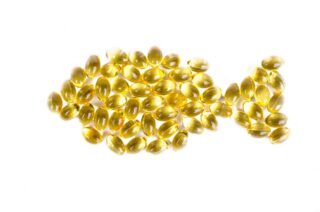
Vitamin D
A growing body of evidence indicates that supplementing with vitamin D can help to reduce the severity and duration of symptoms associated with a concussion, as well as help to improve cognitive functioning. For example, a study in the American Journal of Clinical Nutrition found that participants who supplemented with 4,000 IU of vitamin D per day for 12 weeks reported significant improvements in balance, reaction time, and tactile sensitivity compared to those who did not receive supplementation.
Additionally, a review published in the journal Sports Medicine found that supplementing with vitamin D may reduce the amount of time it takes for an individual to return to their baseline performance after suffering from a concussion. This is likely due to its neuroprotective effects and ability to reduce inflammation.
Vitamin D also appears to have beneficial effects on depression-like symptoms which can occur after a concussion. A study published in BioMed Research International found that among individuals who had suffered minor head injuries or mild TBIs, those who supplemented with vitamin D saw greater improvement in depressive symptoms than those who did not receive supplementation. Overall, these findings suggest that supplementing with vitamin D may be a beneficial adjunct treatment for aiding recovery after concussion or other mild brain injuries.
Magnesium
Magnesium supplementation has been found to be beneficial in supporting recovery after concussion. A recent systematic review of studies published in the American Journal of Medicine concluded that magnesium supplements may reduce the severity, duration, and frequency of post-concussion symptoms such as headaches, sleep disturbances, dizziness, and cognitive impairments.
In addition to reducing symptoms following a concussion, magnesium supplementation has also been shown to aid in the repair of neuronal damage caused by the trauma. For example, a study published in The Neuroscientist journal showed that magnesium was able to attenuate neuronal damage by increasing protective proteins and reducing glutamate levels in rats with traumatic brain injury (TBI).
Furthermore, a study conducted on college football players revealed that those who received magnesium supplements reported fewer concussions over a three year period than those who did not receive supplementation. This suggests that magnesium may provide some protection against concussions by increasing brain resilience and aiding in recovery after an event occurs.
While more research needs to be done in order to gain further insights into how magnesium affects the recovery process following a concussion, current evidence suggests that it is a safe and effective way to help support recovery after such an injury.
Cannabidiol
CBD has been found to be a valuable supplement for those who have sustained a concussion. Studies have shown that CBD can help reduce inflammation, which can occur after a traumatic brain injury (TBI). It can help stabilize the post-injury neurochemistry of the brain, which is often affected due to a concussion. People who use CBD after sustaining a concussion often report feeling more alert and motivated, as well as having better concentration and short-term memory. CBD is also known to decrease anxiety and depression, two common side effects of TBIs.
CBD can also help to reduce headaches and improve sleep quality, both of which are important for healing from a concussion. Furthermore, some studies suggest that CBD may even protect against future cognitive decline by preserving brain cells and protecting them from damage caused by free radicals. All in all, taking CBD following a concussion could make the healing process easier and more comfortable for those who have experienced head trauma. As with all supplements it is important to consult with your healthcare practitioner prior to use in order to know proper dosage and common side affects and interactions.

Vitamin B12
Vitamin B12 supplementation can be an effective tool for recovery after concussion, as evidence suggests that B12 deficiency may contribute to post-concussion syndrome. One study found that patients with chronic post-concussion syndrome were more likely to have lower serum B12 levels, suggesting a potential link between Vitamin B12 deficiency and the condition (Al Abed et al., 2018). B12 supplementation has also been suggested as a potential treatment for post-concussion headaches due to its anti-inflammatory properties (Lakhani et al., 2020).
Additionally, Vitamin B12 has been shown to support cognitive function by aiding in the biosynthesis of neurotransmitters, which are essential for proper brain functioning (Matthews et al., 2016).
Zinc
Zinc is an essential mineral for human health, and supplementation with zinc has been linked to faster recovery times from concussion. Evidence from a study published in the Journal of Neurotrauma suggests that zinc may improve recovery time following a concussion. In their study, researchers found that administration of zinc sulfate within 24 hours after the initial diagnosis of concussion significantly improved recovery outcomes for patients.
Another study in the journal Nutrients showed that taking high doses of zinc was associated with better cognitive performance following a mild traumatic brain injury (mTBI). This is likely due to the fact that zinc plays an important role in the structural integrity of synapses and neurons, as well as helping to reduce inflammation in the brain which can occur after concussions. Taken together, these studies suggest that supplementing with zinc can be beneficial for those who suffer from a concussion and should be strongly considered for those looking to enhance their recovery times.
Probiotics
The use of probiotic supplementation to support recovery from concussions is gaining increased recognition in the medical community. Research conducted on this topic has consistently demonstrated that probiotics may be beneficial for those recovering from mild-to-moderate traumatic brain injury (TBI).
A study published in 2017 showed that daily consumption of a probiotic supplement containing both Lactobacilli and Bifidobacteria, resulted in an improvement in cognitive functioning, including attention and verbal memory, as well as enhanced emotional regulation up to 6 months after TBI. This finding offers potential new treatment strategies for those recovery from concussion-related symptoms.
Other studies have also indicated that probiotics may be useful for patients suffering from post-concussive syndrome (PCS). In a randomized controlled trial conducted in 2018, researchers found that participants who took a multispecies probiotic supplement reported fewer PCS symptoms one month following their treatment than did those who received the placebo. Furthermore, another study showed that taking a probiotic supplement daily could reduce levels of systemic inflammation, which has been linked to longer periods of recovery time following a concussion.
Overall, there is evidence to suggest that probiotics can play an important role in supporting concussion recovery by providing neuroprotection and promoting overall health. Probiotics have been identified as having neuroprotective effects due to their ability to promote gut homeostasis and modulate neuroinflammatory processes which can help improve cognition and reduce inflammation.
While further research is needed to determine the exact mechanisms by which probiotics might support recovery following concussion, current findings suggest that this type of supplementation may be an effective adjunctive treatment option.

Curcumin
Curcumin supplementation may have a beneficial effect on recovery from concussion. This is because curcumin is a powerful antioxidant that scavenges oxidative stress and inflammation, both of which can contribute to the progression of post-concussion syndrome (PCS) symptoms. A 2019 study published in the journal Brain Impairment found that curcumin supplementation significantly reduced PCS symptoms in patients with mild traumatic brain injury when compared to placebo. The study concluded that curcumin has potential as an effective supplement for reducing PCS symptoms.
Additionally, another study published in 2020 in the European Journal of Nutrition found that curcumin improves cognitive function after experiencing a concussion due to its anti-inflammatory properties. Participants of this study experienced improved memory and attention following supplementation with curcumin over the course of six weeks.
Furthermore, another 2020 study published in Brain Injury showed that curcumin supplementation may protect against microglial activation, which is one of the leading causes of inflammation after a concussion. This suggests that by supplementing with curcumin, individuals may be able to reduce their risk for developing neuroinflammation after sustaining a concussion.
Glutamine
Glutamine supplementation may be a valuable tool to support recovery after concussion. Research has shown that glutamine supplementation can reduce cerebral edema and improve neurovascular autoregulation after concussion, as well as promote repair of damaged neurons and axons. Studies have also suggested that glutamine supplementation can reduce post-concussion symptoms such as headache, dizziness, confusion, difficulty concentrating, memory loss and fatigue.
One study reported that patients with mild traumatic brain injury who received glutamine supplements experienced faster resolution of their symptoms compared to those who did not receive supplements. Another study found that participants with moderate-to-severe traumatic brain injury who received glutamine supplements had improved cognitive performance on tests measuring attention span and working memory. Thus, glutamine supplementation can be beneficial for recovery from concussion by helping to reduce symptoms associated with injury and aiding in neurological repair processes.
Carnitine
Studies have demonstrated that the administration of the amino acid L-carnitine, in combination with traditional physical and cognitive therapy, can lead to faster and more complete recovery from concussion.
Carnitine helps to maintain the brain’s energy balance, as it helps transport fatty acids across mitochondrial membranes for energy production. This process helps support healthy neural pathways, which can help reduce the symptoms of concussion and improve overall recovery time.
Additionally, carnitine works to protect neurons from oxidative damage by stimulating antioxidant activities and increasing glutathione levels in the brain. Observational studies suggest that carnitine supplementation may also alleviate some of the long term consequences associated with concussion such as decreased concentration and memory issues.
CoQ10
Finally, Coenzyme Q10 has been found to protect brain cells from free radical damage caused by a traumatic event like a concussion, helping to speed up the healing process.
CoQ10 supplementation has been studied as a potential tool to support recovery after concussion. In one study, patients with mild traumatic brain injury were given CoQ10 for 8 weeks and demonstrated improved neurological symptoms compared to the placebo group. Specifically, the CoQ10 group reported reduced headache frequency and intensity, increased cognitive performance on a standard battery of tests, and overall reduction in disability.
In another study, patients with acute mild traumatic brain injury were supplemented with CoQ10 for 8 weeks. Participants reported statistically significant improvements in quality of life, cognition, and alertness when compared to those who received a placebo. Additionally, MRI scans performed on the subjects revealed less white matter lesions in those who had been provided CoQ10 as opposed to the control group.
CoQ10 supplementation can be used to support recovery after concussion by improving clinical scores related to cognition and disability while also helping reduce oxidative stress and inflammation associated with MTBI pathology.
All these supplements should be taken under the guidance of a healthcare provider in order to maximize their effectiveness in treating and healing a concussion.
Be Mindful of Your Symptoms
It’s important that you monitor your symptoms closely after sustaining a concussion so that if they get worse, you can seek medical help right away. Common signs and symptoms include headaches, dizziness, nausea/vomiting, sensitivity to light and noise, difficulty concentrating or remembering things, feeling tired all the time, blurred vision or double vision, slurred speech, and irritability/mood changes such as depression or anxiety. If any of these symptoms persist beyond three weeks following the injury or become severe enough interfere with daily life activities (e.g., work/school), you should contact your healthcare provider for further evaluation and treatment if necessary.




